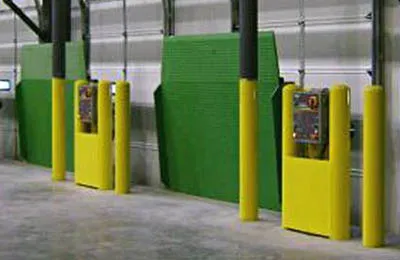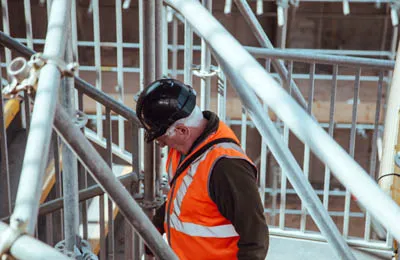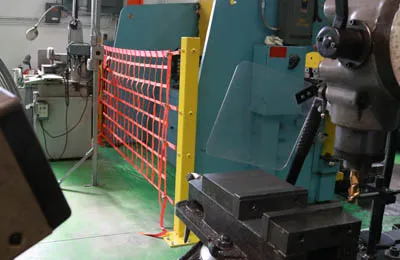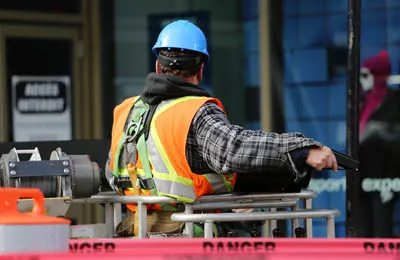How Forklift Protection Barriers and Netting Products Improve Warehouse Safety

Since warehouses may be hazardous workplaces, warehouse safety tips may shield your employees, strengthen your bottom line, and save your company balance sheet. Across the US, roughly four percent of warehouse employees are affected by diseases or work-related accidents that involve occupation limitation, lost productivity, or transfer each year.
“Across the US, roughly four percent of warehouse employees are affected by diseases or work-related accidents that involve occupation limitation, lost productivity, or transfer each year."
With this in mind, an estimated 145,000 people working in the specific role of warehousing, roughly 5,800 of them may undergo a work-related illness or injury each year. These numbers coincide with the number of machines and heavy equipment used on a daily basis.
According to OSHA (osha.gov) statistics, some of the most typical warehouse hazards are improper piling of products - injuries from repetitive movement - improperly using forklift - insufficient provisions for fire security - failure to correctly use personal protective gear - slip, trip, falls hazards in addition to exit obstructions. The slip trip and falls area are where US Netting likes to keep the focus.
Forklift Safety Barriers from US Netting

We find that our industrial strength netting products are an excellent addition to your warehouse environment. If your facility is in constant use of a forklift our Defender Gate™ and Defender Net Line are a superior safety barrier product to stop runaway fork-lifts. By reducing the number of accidents, you will pad your bottom line, strengthen employee morale, and make a more productive atmosphere. Keep reading to learn a few safety tips for warehouse employees.
Facility Safety Tips
Warehouse safety starts with coaching - it does not matter how secure the warehouse is if workers are not trained correctly on regulations for safety. Although testing can be wildly unpopular, it ensures that the vital info is kept and understood, which leads to adoption at work. In case your warehouse incorporates heavy equipment operators, the safety accreditation and also training should be of that the utmost importance.
It is because machinery injuries are extraordinarily dangerous and even fatal. Heavy equipment should be contained with safety barriers to stop flying parts, metal, or debris. US Netting has effectively created solutions to these problems from stainless steel high powered safety barriers, steel fabricated Defender Gates™, and even KevlarTM blanket configurations to contain blasts.
It seems simple but be sure to keep the workplace clean and tidy - If left unattended, empty boxes, debris, empty pallets, discarded shrink wrap, and a wide range of other items may naturally accumulate in the warehouse. These items can and may become dangerous fall dangers if left unattended. One quintessential warehouse security tip is to keep that the floor free of all kinds of debris. You should also ensure you keep cleaning products, oil, water, along with other objects in the right place to prevent spills that may lead to a slip and fall injury. If an area has a necessary off-shoot of debris, be sure to contain it using a fabricated debris net panel to prevent rubble in an adjacent workspace.
"One quintessential warehouse security tip is to keep that the floor free of all kinds of debris. You should also ensure you keep cleaning products, oil, water, along with other objects in the right place to prevent spills that may lead to a slip and fall injury."
Keeping Workspaces Tidy
Everything in your warehouse must have a designated place. Most significantly, your employees should understand where everything belongs and make sure items are correctly stored. This simple step can minimize the chance of mishaps caused by misplaced items. Always use proper stacking techniques - stacks of packages which are uneven can be unsafe and unstable. Anytime products or materials are stacked incorrectly, a whole pallet of items or a single item may fall and injure workers. It is imperative that the heaviest items are always stacked on that the bottom, and all boxes are stacked evenly. Choosing to invest in top-quality racking gear up-to-date with all criteria of safety is an essential aspect of the safety of your workforce. If there are areas of racking with little to no interaction. Use rack safety netting to protect workers below from falling product. Lighting is often overlooked. The most efficient warehouse safety advice is to use effective warehouse lighting. If your employees cannot see in the workplace, the chance of danger becomes an exponential problem.
“This simple step can minimize the chance of mishaps caused by misplaced items. Always use proper stacking techniques - stacks of packages which are uneven can be unsafe and unstable. Anytime products or materials are stacked incorrectly, a whole pallet of items or a single item may fall and injure workers.""

Forklift Safety Tips
Only operators who've completed the forklift operation skill training might operate the forklift. Wear designated work garments and protective devices.
Pre-operational inspection
Inspect the lift before beginning work and inform the supervisor instantly if there are issues. Contact your dealer for repairs or alterations.
FASTEN YOUR SEATBELT!
Prevent Hazards - do not drive over objects such as wood pieces scattered on the ground. Doing so can cause the load to change or the operator to lose control.
Fix an unstable load - Be sure to stack product on pallets and skids securely and correctly. Use prevention measures like ropes or binders if required. Don't carry unstable loads.
Dont Use Fork Tips Do not use the tip of the fork as a lever to increase a heavy load. Do not push a load using this part of the forks, and do not use the tip for pulling a load. Pallets can snap off the end of the forks or you could damage the goods.
Utilize Suitable Pallets - Utilize pallets and skids that can resist the weight of the load. Do not use damaged, deformed or damaged pallets and skids.
Maintain Safe Working Speed Limit - Always run the forklift at a speed that's acceptable for the surroundings. Celebrate the warehouse rules and run the machine safely.
Use a guide in confined spaces - The operator should predetermine signs with a guide. The forklift operator should keep sight of and follow signs given by the guide. When in aisles, the guide can watch the back side of the racking to ensure no customer, employees or other machinery are below the area. A guide is a must when visibility is impaired.
Look Left and Right and Audio Horn - This is extremely important when entering a new area, truck trailer, or gated location. Use the horn to make any workers in the area aware that you are traveling by.
Keep Forks Low - Don't travel with the forks raised higher than 8 inches from the floor, and never maneuver through the facility using the forks in an elevated position or tilted forward.
Use Common Sense! - Drive cautiously when backing. Always look in this direction of travel.
No Riders - A forklift is built for only one operator. If more than one rider is present, that means someone isn't wearing a safety belt.
Slow Down When Turning - Slow down the lift gradually when turning. Forklifts can topple over even at very slow speeds. Since most lift trucks steer from the back end of the machine, turning can be impaired. A combination of acceleration and a sharp turn may cause a roll over.
Special Care for Special Loads - Take particular care when carrying out a long or wide load. Turn and work gradually to prevent the load from shifting. Ensure that the load is balanced.
Watch Height - Be cautious of the elevation of the upper part of the pipe when entering or exiting buildings. Too Heavy - Eye Speak to - Operators will make eye contact with a pedestrian whenever this pedestrian has to walk past, in front, or behind this lift or other mobile equipment.
Hand Signals - Operators shall allow safe clearance and utilize STOP and GO AHEAD hand signs to communicate who'll proceed first and will stop at all intersections where a pedestrian is present.

US Netting and Loading Dock & Warehouse Safety
US Netting strives to make moves that enhance the safety of your workplace facility. Be sure to place a safety barrier wherever you have wall openings, loading docks or features that require an added layer of protection. The Defender Gate™ can be used in conjunction with the security guard to prevent unauthorized access or superior protection around slips and falls.
Get in touch with us!
Questions? Comments? Ready to order your next custom net? Contact us for a quote or call us at 1-800-331-2973 and we will be happy to assist you.
Don't forget to submit your stories!
If you have news that you would like to be heard, submit any articles, pictures, and ideas to our quote request form.






